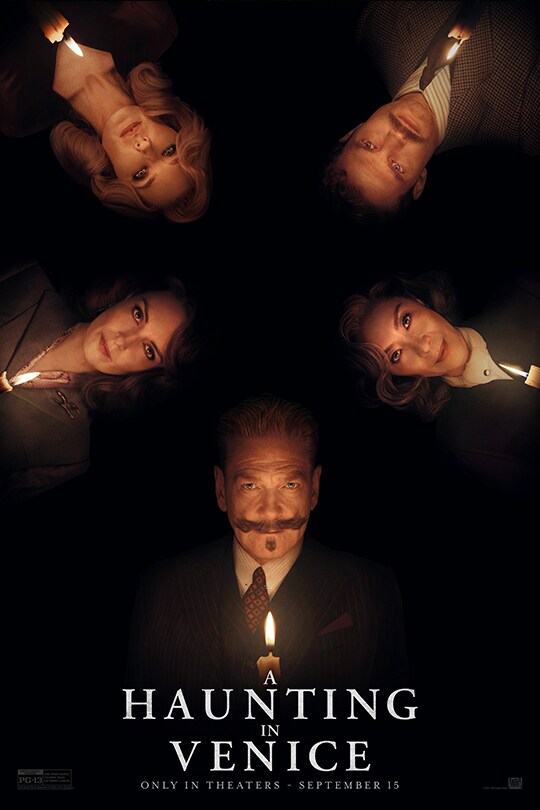By Andrew Hamlin
NORTHWEST ASIAN WEEKLY
I haven’t read “Hallowe’en Party,” the 1969 Agatha Christie novel adapted by Kenneth Branagh into the new film “A Haunting In Venice.” But I can tell you that Branagh, directing himself for the third time as Hercule Poirot, Christie’s masterful and comic Belgian detective, selected not one of the fanciful Poirot stories, but a dark, sinister, and emotionally desperate landscape with a visual palate to match.
“Venice” kicks off with a Poirot in obscurity, or as much obscurity as a famous figure can attain in a big city. He looks after plants, he sits quietly, bright eyes staring over his fanciful facial hair. He ignores the pleas of prospective clients, seen and heard to beg for him every time he goes out, keeping them at bay with his burly bodyguard, Vitale Portfoglio (played by Riccardo Scamarcio).
What lures him back to his trade? A feisty, not entirely trustworthy writer, Ariadne Oliver, played with great gusto and a touch of the sinister, by Tina Fey. She’s convinced a prominent spiritual medium, Joyce Reynolds (Michelle Yeoh), is a fraud, and demands the detective’s attendance at a Reynolds séance, for a debunking.
This film marks Michelle Yeoh’s fifth film credit (although only her second non-animated film), since winning her Oscar for Best Actress at the 2022 Academy Awards. She isn’t granted a great deal of screen time, but she milks every last second, with considerable help from director Branagh and screenwriter Michael Green. She appears first as a haunting apparition with a spectral fixed face, emerging from a corner of the screen as she edges closer to the séance site.
Her large, dark, and subtly expressive eyes fill the screen, behind her mask, as cinematographer Haris Zambarloukos moves in for an extreme close-up. With the mask off, the camera keeps moving around Yeoh, intentionally destabilizing the viewer with those off-kilter set-ups filmmakers refer to as “Dutch angles.” She understandably quarrels with Fey’s character, who insists on communication with the spiritual world as inherently fraudulent. Throughout, her resilient dignity holds sway, how she lifts her eyes, and often her chin, at her accusers. She vividly reminds us how she got her Oscar, but also how her screen mastery remains such an arresting, constantly replenishing, work in progress.
After she’s gone, her absence continues to reverberate. And that’s appropriate, because the “Haunting” essence—quite apart from the formula of a murder (or more than one), a puzzle, suspects, and Poirot’s indubitable solving of the case—lies in philosophy, religion, and, beyond what one believes, what one practices. Poirot, as he confesses quietly, would love to believe in the supernatural because after all, the presence of ghosts implies the existence of spirits, surviving the physical plane. The existence of spirits, in turn, implies the existence of God. Which, in its turn, implies the existence of logic, order, and justice, to the universe—all watched over, and administered, by an ultimately logical and just God.
But, Poirot adds, he’s simply seen too much. Two World Wars. Murder left and right. Greed, villainy, short-sightedness, the weakness of the do-gooders in this world. He simply can’t believe in logic, order, and justice, as Godly values, only as they manifest, too little and too late, in the affairs of the living.
I won’t give away what turns out to be true, in the riddle of Yeoh’s death, and her lingering. Suffice to say that blood, fear, and chaos run rampant. But Poirot, for all his regrets and disbelief, cannot confine himself to standing disinterested on the sidelines. For good, for bad, or possibly for nothing, he must act. He must at least try to impose those values he’s turned away from. They remain ingrained upon his heart.
“A Haunting In Venice” plays currently at theaters in and around Seattle. Check local listings for venues, prices, and showtimes.



